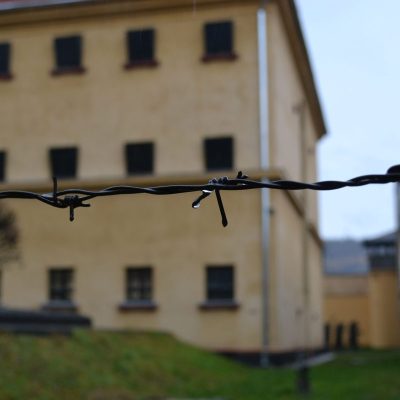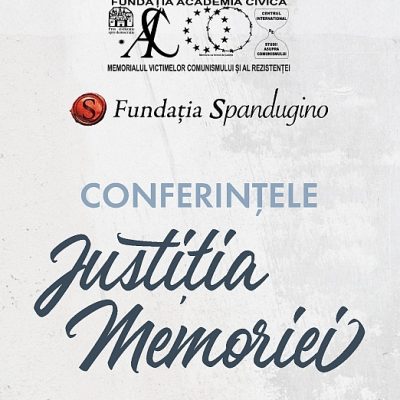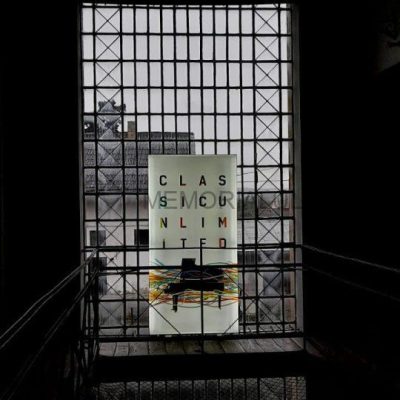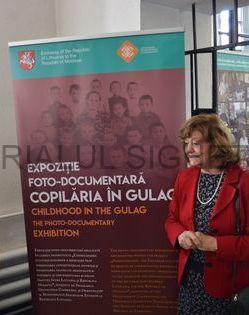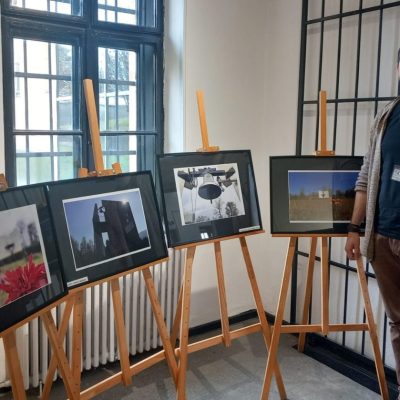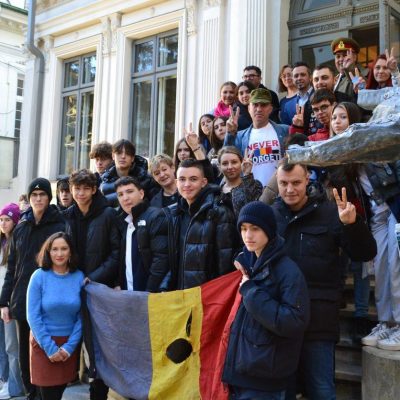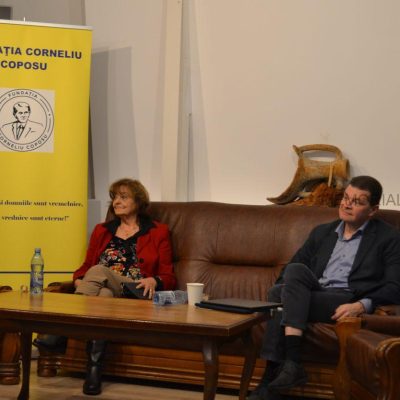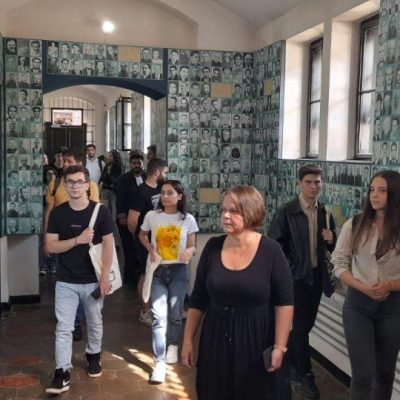 Monuments are objects that have been placed in visible places in public space to pay tribute to the deserved, to preserve the memory of particularly important events, or to restore the memory of the forgotten. Sometimes, however, they become an element of conscious manipulation and are meant to change the way people perceive the past.
Monuments are objects that have been placed in visible places in public space to pay tribute to the deserved, to preserve the memory of particularly important events, or to restore the memory of the forgotten. Sometimes, however, they become an element of conscious manipulation and are meant to change the way people perceive the past.
Their long-term presence in the public space allows us to see how the importance of what a monument commemorates changes over the years. This makes monuments an important indicator of changes in collective memory. Looking at their history – from the circumstances of their creation to their later fate – they can be used to learn and understand the history of a country.
To bring closer the knowledge about the ways in which monuments can be used to learn about history and therefore to better understand the role of memory in shaping identity and values is the aim of the project Monuments of Remembrance 1918-2018.
The project Monuments of Remembrance 1918-2018 is an international educational project, implemented in Poland, Czech Republic, Slovakia and Romania by five independent civil society organisations, which are working on a daily basis to promote knowledge about the past and to promote historical and civic education:
- Krzyżowa Foundation for Mutual Understanding in Europe (Poland),
- Paweł Włodkowic Institute (Poland),
- Centrum pro dokumentaci totalitnich rezimu, z.s. (Czech Republic),
- Post Bellum SK (Slovakia),
- Fundatia Academia Civica (Romania).
Among participants of the project were school students, scientists, experts in the field of public history, historical and civic education and teachers from Poland, Czech Republic, Slovakia and Romania.
As part of the project, the website www.monuments-remembrance.eu was created, which contains information on 300 selected monuments from the four countries mentioned above. Their descriptions have been specially prepared to highlight not only what the monuments depict, but how their significance has changed over the years.
On www.monuments-remembrance.eu you can also find a guidebook with more information on how monuments are used to tell about the past (or a certain version of it) and the main methodological guidelines used to prepare descriptions of the monuments during the project. This publication also contains guidelines on how to use monuments in the process of historical education, for which purpose special scenarios have been developed, and recommendations on how to interpret monuments, including those that may lead to conflicts.
The Monuments of Remembrance 1918-2018 project was implemented from 31 August 2018 to 31 January 2020 in Poland, Czech Republic, Slovakia and Romania under the Europe for Citizens programme (strand: European Remembrance).
Below you will find a detailed course of the subsequent stages of its implementation.
Five events have been carried out as a part of this project:
Event 1: Project partner meeting
Participation: The meeting was attended by 28 citizens, 20 of whom came from Wrocław, Świdnica and Krzyżowa (Poland), 2 from Prague. (Czech Republic), 2 from Bratislava (Slovakia) 4 from Bucharest and Sighet (Romania).
Place/Date: The event took place in Krzyżowa (Poland) from 30/09/2018 to 02/10/2018.
Short description: On 30.09.-02.10.2018 in Krzyżowa took place a meeting of representatives of Krzyżowa Foundation (Poland), Paweł Włodkowic Institute (Poland), Post Bellum (Slovakia), Centrum pro dokumentaci totalitnich rezimu, z.s. (Czech Republic) and Fundatia Academia Civica (Romania) – partners of the project Monuments of Memory 1918-2018.
During this meeting of experts in history and public history from Poland, the Czech Republic, Slovakia and Romania, historical policy and civic activities in the field of collective formation were discussed. The participants of the meeting agreed on the methodology of work and shared the tasks they will jointly implement in the project. The meeting also included training on youth work methods, which will be an important part of the project.
Event 2: Documentary stage – preparation of descriptions of monuments
Participation: 35 citizens took part, 10 of whom came from Wrocław, Świdnica and Krzyżowa (Poland), 3 from Prague. (Czech Republic), 4 from Bratislava (Slovakia) 18 from Bucharest and Sighet (Romania).
Place/Date: Works were carried out in Poland, the Czech Republic, Slovakia and Romania from 03/10/2018 to 30/06/2019.
Short description: One of the main results of the project is the preparation of 300 descriptions of monuments from Poland, Czech Republic, Slovakia, and Romania, which will be published on a website open to the public, where they will serve as a source of knowledge on how monuments are used for telling about history and will become a tool that can be used in educational activities with young people.
For this purpose, experts from the project partner organizations have established a list of monuments located in their country, whose circumstances, subsequent fate, the importance attributed to them, or the topics depicted on them, made them worthy of being published on the project website. Then, for many months, they collected information on the circumstances of the creation and the subsequent fate of the monuments, as well as they prepared photographic documentation of the monuments themselves, or obtained it from third parties.
Each of the monuments was described in two languages – the language of the country where it was created, as well as English, which is the working language of the project.
The descriptions prepared in this way were forwarded to the project coordinators, who gradually published them on the project website.
Event 3: Educational stage – involving students into the project
Participation: 336 citizens took part, 83 of whom came from Wrocław (Poland), 90 from Prague (Czech Republic), 75 from Bratislava, Ziar nad Hronom, Banská Bystrica (Slovakia) 88 from Bucharest, Cosesti Arges and Sighet (Romania).
Place/Date: Activities were carried out in Poland, Czech Republic, Slovakia and Romania from 01/03/2019 to 30/06/2019.
Short description: An extremely important element of the project is to promote its objectives and knowledge of the monuments among students and to encourage them to research the circumstances and history of the creation of selected monuments on their own.
Therefore, in schools in Poland, Czech Republic, Slovakia and Romania, experts from the project’s partner organizations conducted classes on selected elements of historical policy and the ways in which societies commemorate the history of their nation. During these classes, students also became acquainted with the objectives of the Monuments of Remembrance 1918-2018 project and the methods of preparing descriptions of the monuments.
Then, working alone or in small groups, under the supervision of a history teacher or experts from the partner organizations of the project, students were asked to investigate not only the circumstances of the creation of the objects of their choice – but above all how they function in the awareness of the local community. The results of pupils’ work were presented in the form of presentations or exhibitions in schools or project partner organizations from a given country. The best descriptions of the monuments have been published on the project website.
Event 4: Educational workshops for students
Participation: The meeting was attended by 149 citizens, 119 of whom came from Wrocław and Leszno (Poland), 15 from Kaiserslautern (Germany), 15 from Odessa (Ukraine).
Place/Date: Workshop took place in Krzyżowa (Poland) from 24/09/2019 to 26/09/2019.
Short description: On 24-26.09.2019 in Krzyżowa the educational workshops of the project took place. During them, young people from Poland, who have participated in the project since the beginning of that year, as well as a group of young people from Germany and Ukraine, took part in workshops devoted to civic education and participated in lectures on collective memory, conflicts of memory, attitudes towards foreign cultural heritage and the difficult process of dealing with relics of the past – on the example of decommunization in Poland.
Event 5: Debate and seminary summarizing the project
Participation: The meeting was attended by 56 citizens, 43 of whom came from Wrocław, Świdnica, Warsaw and Krzyżowa (Poland), 2 from Prague and Strakovice (Czech Republic), 5 from Bratislava (Slovakia) and 6 from Bucharest, Cosesti Arges and Sighet (Romania).
Place/Date: Meetings were held in Wrocław (Poland) from 11/10/2019 to 13/10/2019.
Short description: On 11.10.2019, in the Wrocław Culture Zone, a debate on ‘History in public space. How is the past told to us?’ was held. It was attended by historians and experts in history education from four Central and Eastern European countries: Poland, Czech Republic, Slovakia and Romania. During the debate, questions were asked about how in particular countries public space is used for telling about the past. The experts also talked about the challenges faced by history education and the differences between the discussion about the past in Poland, Czech Republic, Slovakia and Romania. The results of the project Monuments of Remembrance 1918-2018 were also presented and it was announced that the project results will be made available on a specially created website.
It was an open debate, in which apart from invited experts and employees of the project partner organizations, students and interested citizens of Wrocław took part.
After the debate and for the next two days, a summary meeting of the project Monuments of Remembrance 1918-2018 was held, during which representatives of the project’s partner organizations could exchange their experiences and remarks, plan further activities using the tools developed during the project, and jointly reflect on the latest methods used to promote historical knowledge – which was supported by lectures given by specially invited experts who worked on international historical and exhibition projects.
This was also the last event organized within the project.


